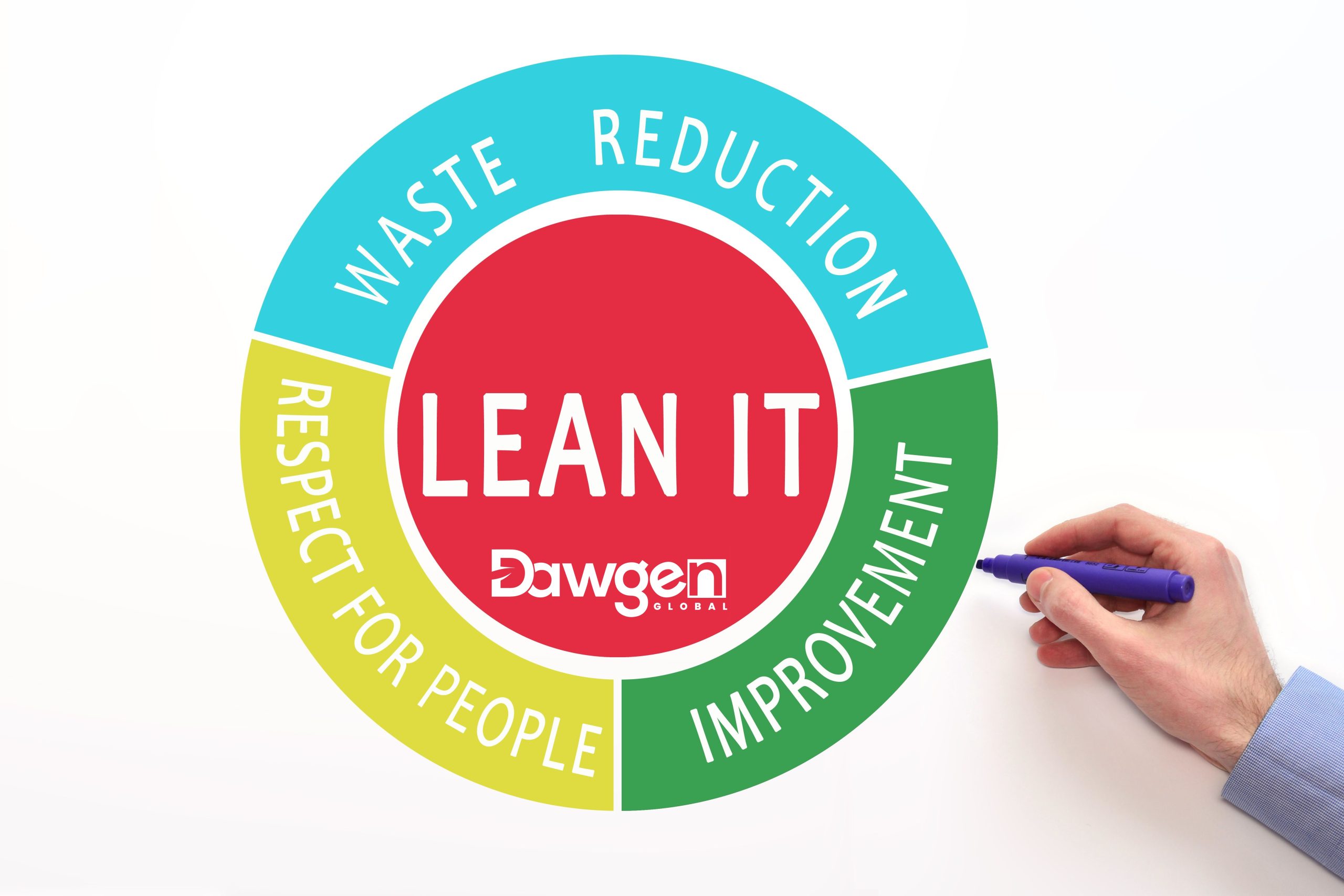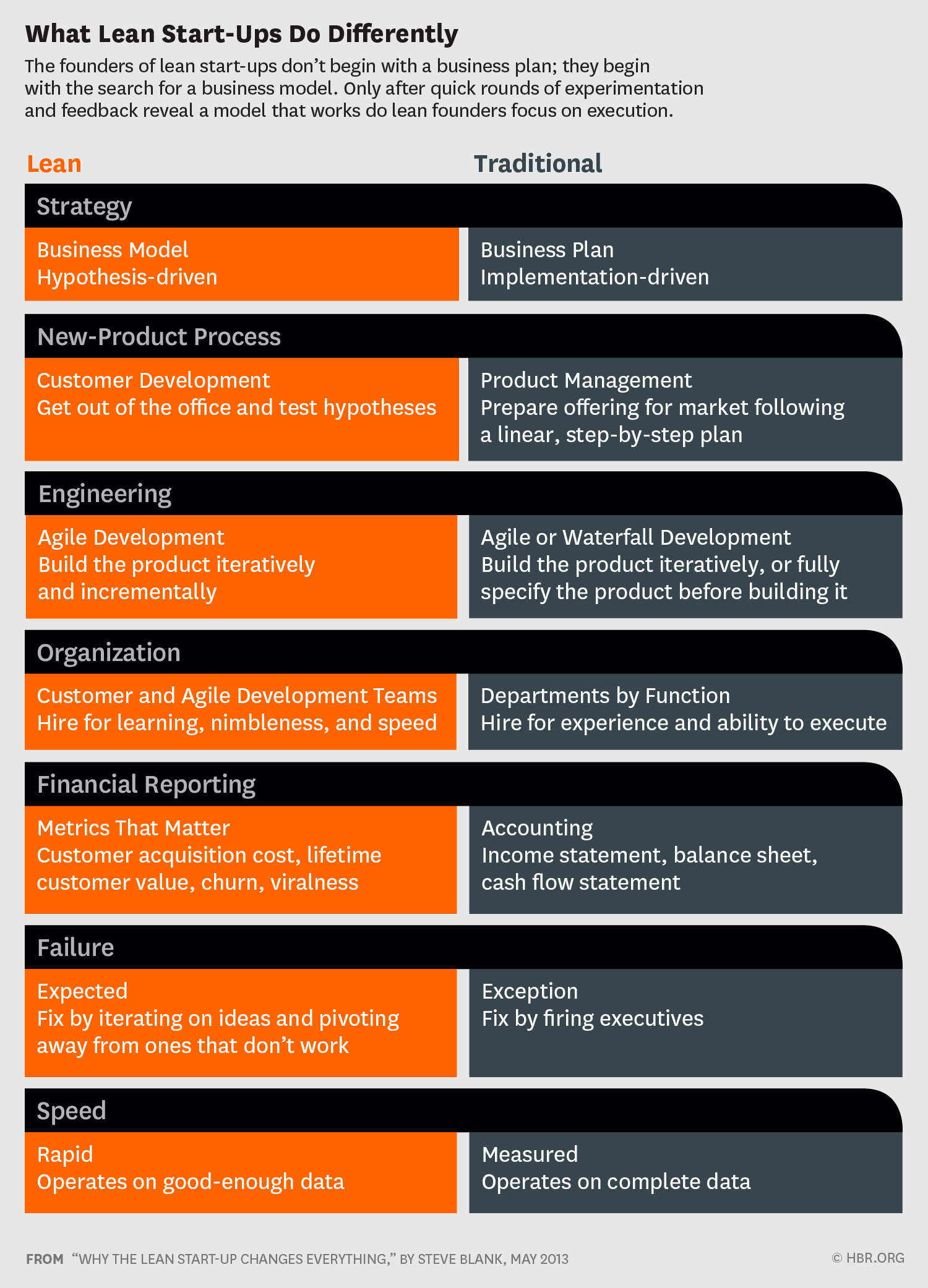 In today’s fast-evolving business landscape, the contrast between lean start-ups and traditional business models is becoming increasingly stark. As we examine the Illustration below —a concise yet potent visual representation—it’s clear that the methods businesses employ to strategize, develop products, and report financially are at a pivotal crossroads. This article, with insights from Dr. Dawkins Brown, the executive chairman of Dawgen Global, will delve into the lean approach’s essence and its juxtaposition with traditional business practices.
In today’s fast-evolving business landscape, the contrast between lean start-ups and traditional business models is becoming increasingly stark. As we examine the Illustration below —a concise yet potent visual representation—it’s clear that the methods businesses employ to strategize, develop products, and report financially are at a pivotal crossroads. This article, with insights from Dr. Dawkins Brown, the executive chairman of Dawgen Global, will delve into the lean approach’s essence and its juxtaposition with traditional business practices.
Comparing Lean and Traditional Business Approaches:
Strategy:
At the heart of any lean start-up is the hypothesis-driven approach. It’s about building a business model based on assumptions that can be tested and validated in the real world, which is quite the opposite of the traditional implementation-driven method that relies on exhaustive business plans. “In a lean start-up, the strategy is more fluid, allowing for rapid adaptation, which is crucial in today’s dynamic markets,” notes Dr. Brown.

New-Product Process:
Lean start-ups champion the process of customer development—getting out of the office to test hypotheses and validate learning through interaction with real customers. This contrasts with the product management tactics of traditional models that follow a linear, step-by-step plan with little room for deviation or customer feedback until later stages.
Engineering:
The engineering process within lean start-ups is characterized by agile development, where products are built iteratively and incrementally, allowing for continuous feedback and improvement. This stands in contrast to traditional methods that may involve either a similar iterative process with less emphasis on flexibility or a rigid waterfall development where every step is detailed upfront.
Organization:
Lean methodology influences not just process, but structure. “Lean organizations prioritize agility; they’re dynamic entities that evolve by learning from the market,” Dr. Brown explains. Traditional business structures are more likely to be compartmentalized, emphasizing specialized departments and roles designed for execution rather than innovation.
Financial Reporting:
In lean start-ups, financial success is measured by ‘metrics that matter’—those that provide the most significant insight into the business’s growth and customer engagement. Traditional businesses often focus on comprehensive accounting reports, which, while important, may not capture the nuances of modern business dynamics.
Failure:
Failure in a lean start-up is not a death sentence but a stepping stone. “Lean start-ups expect failure and embrace it as a means to pivot and refine their approach,” says Dr. Brown. The traditional approach often views failure as a setback and may resort to extreme measures like firing executives to manage it.
Speed:
Lean start-ups operate with remarkable speed, making decisions based on ‘good-enough’ data. This enables them to react and adapt quickly, unlike traditional businesses that may take measured steps based on complete data, potentially slowing down innovation and response to market changes.
Benefits of the Lean Approach:
The adoption of a lean approach in business is much more than a mere strategy adjustment; it’s a transformative movement towards resilience and efficiency. Lean methodologies allow businesses to embrace flexibility and adaptability as core principles, thereby enabling them to navigate the unpredictable ebbs and flows of market demands with agility and foresight.
One of the most compelling advantages of the lean approach is its inherent capacity for rapid pivoting. In an economic climate where customer preferences and technological advancements evolve at breakneck speed, the ability to pivot quickly is invaluable. Lean businesses can test new ideas at minimal cost, gather real-time feedback, and iterate—or even overhaul their offerings in response. This nimbleness often results in significantly reduced costs and risks compared to the traditional model, which may invest heavily in untested ideas.
Moreover, the lean model’s focus on customer development ensures that products and services are continually shaped and reshaped by actual market needs, not just theoretical market research. This ongoing dialogue with the customer base creates a dynamic where products are developed with a customer-first mindset, often leading to higher satisfaction and loyalty.
The cost advantages of lean are also noteworthy. By valuing iterative development and minimizing waste through just-in-time production, lean businesses can often create higher value products with less capital. This efficiency not only conserves resources but also enables lean businesses to offer competitive pricing, which can be a significant market differentiator.
Risk management is another area where the lean approach shines. With its embrace of small-scale experiments and frequent iterations, lean businesses can test assumptions and validate hypotheses without committing extensive resources. This means that if an idea doesn’t work as expected, the business can quickly move on to the next without significant financial loss—essentially de-risking innovation.
Additionally, the lean approach cultivates a culture of continuous improvement. Businesses are encouraged to constantly seek out inefficiencies and opportunities for optimization, which can lead to a cycle of positive growth and performance enhancements. This culture not only improves the product but also empowers the workforce, as employees become actively engaged in the company’s success.
Finally, the lean model’s reliance on data and metrics that matter—like customer acquisition cost, lifetime customer value, churn, and virality—provides businesses with a clear picture of their growth and market position. These metrics offer actionable insights that can guide strategic decisions and resource allocation, ensuring that the company’s efforts are always aligned with its most critical growth drivers.
In summary, the benefits of the lean approach—swift adaptability, reduced costs and risks, customer-centric development, efficient resource utilization, enhanced risk management, a culture of improvement, and data-driven decision-making—equip businesses to not just survive but thrive amidst the challenges of modern markets.
Challenges and Considerations:
Despite its advantages, the lean approach is not without challenges. It requires a cultural shift and can be unsettling for those accustomed to traditional structures. Furthermore, certain industries or projects may benefit from the traditional approach’s predictability and stability.
As we consider the lean start-up model in comparison with traditional business practices, the advantages of a more flexible, agile approach are clear. The future of business methodology seems to be pointing towards models that can quickly adapt to change and uncertainty.
Dr. Dawkins Brown encourages all business leaders to ponder: “In what ways can your business become more lean? Are you prepared to adapt and evolve?” For those ready to transform their operations and embrace the lean methodology, Dawgen Global stands ready to guide the transition with expertise and insight.
Next Step!
“Embrace BIG FIRM capabilities without the big firm price at Dawgen Global, your committed partner in carving a pathway to continual progress in the vibrant Caribbean region. Our integrated, multidisciplinary approach is finely tuned to address the unique intricacies and lucrative prospects that the region has to offer. Offering a rich array of services, including audit, accounting, tax, IT, HR, risk management, and more, we facilitate smarter and more effective decisions that set the stage for unprecedented triumphs. Let’s collaborate and craft a future where every decision is a steppingstone to greater success. Reach out to explore a partnership that promises not just growth but a future beaming with opportunities and achievements.
✉️ Email: [email protected] 🌐 Visit: Dawgen Global Website
📞 Caribbean Office: +1876-6655926 / 876-9293670 📲 WhatsApp Global: +1 876 5544445
Join hands with DawgenGlobal. Together, let’s venture into a future brimming with opportunities and achievements.

